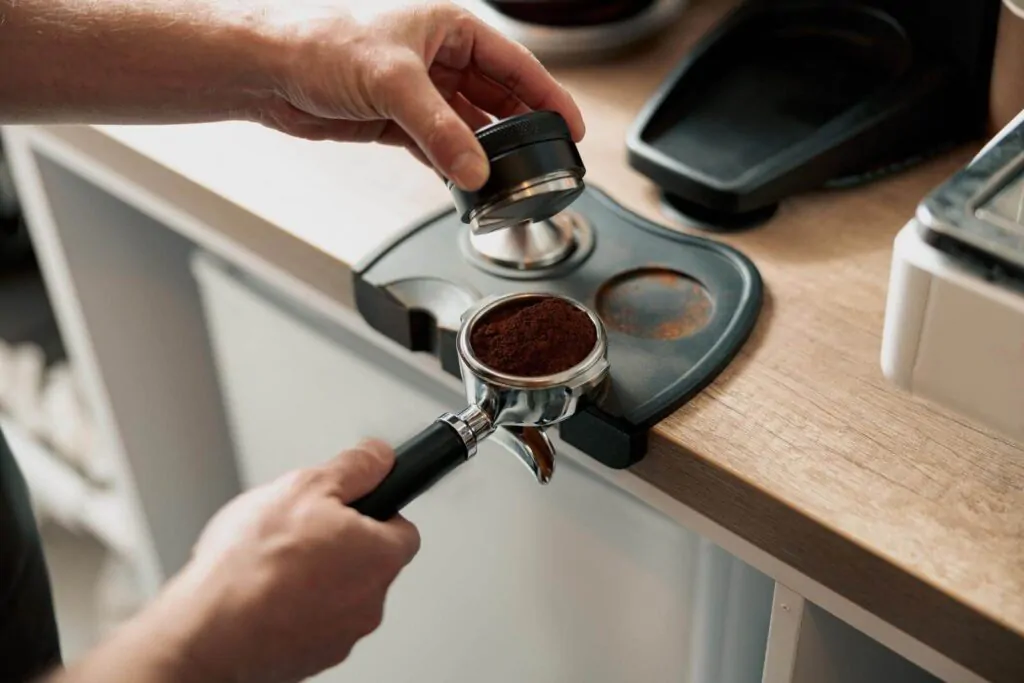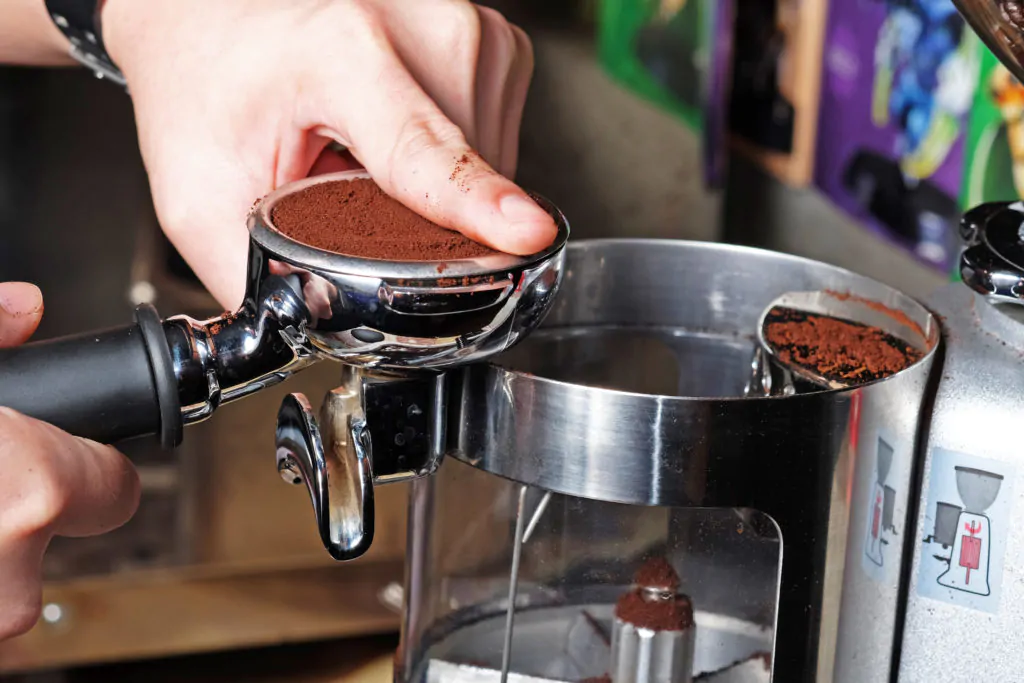What is tamping, and does it matter? Here are seven reasons why tamp coffee is an absolute must before you pull an espresso shot.

Packing coffee ground into the portafilter is the key to a successful espresso shot. Some baristas are arguing whether or not tamping is essential. And therefore, some of them don’t even bother tamping it before the brew.
If you’re new to the espresso scene, mastering your tamping technique will pave the way for a greatly pulled shot. There are matters with pressure, timing, and angle to promote an even extraction, and from there, tamping will define the taste of the coffee.
Here are seven reasons why tamping coffee is important.
- 1. Tamping Leaves Enough Room To Interact With Water
- 2. Tamping Allows Water To Optimally Saturate The Coffee
- 3. Tamping Compresses Coffee Grounds Into Evenly Distributed Puck
- 4. Tamping Prevents Water From Escaping The Group Head
- 5. Tamping Can Make Or Break A Successful Extraction
- 6. Properly Tamping Unpacks Coffee’s Balance Profile
- 7. Tamping Coffee Is One Step Forward To Be A Great Barista
1. Tamping Leaves Enough Room To Interact With Water
Tamping coffee allows pressurized hot water to pass through the coffee, absorbing all the flavors and aromas released from the grounds. There’s a “pre-infusion” feature if you use an espresso machine. To put it simply, “pre-infusion” is the process when hot water comes in contact with coffee with low pressure to get it ready before pressurized hot water comes through.
2. Tamping Allows Water To Optimally Saturate The Coffee
One of the major reasons why tamping coffee is important is that it gives the coffee “puck” enough waterways to support the extraction performance.
The hot water will follow these waterways before coming out of the machine. During this journey, the water can fully saturate the coffee within an appropriate amount of time. One of the tricks to even out your coffee grounds is to give them a light, quick shake before tamping.
3. Tamping Compresses Coffee Grounds Into Evenly Distributed Puck
Extraction is the key player in the espresso-making game. Creating a proper and even puck by tamping is part of creating a high pressure which should be 15 lbs or so to start. A failed tamping approach will mess up the extraction by causing uneven waterways.

The water flows through the puck too quickly when coffee is not tamped. As a result, the water doesn’t have enough time to come in contact with the coffee for optimal extraction.
4. Tamping Prevents Water From Escaping The Group Head
What is a group head exactly? Well, in the world of coffee machines, a group head refers to the part of the espresso machine where water from the boiler is distributed into the filter basket. Think of it as a gateway where the machine meets the group handle, or the water meets coffee.
So what does group head have to do with tamping anyway?
The group head marks the beginning of the extraction process. Tamping coffee the right way will allow water to pass through the group head, stay there, and soak up all the flavors and aromas of the grounds before going downward. It all boils down to evenly distributed coffee and tamping instead of a forceful approach.
You might be interested in learning why is espresso served with sparkling water.
5. Tamping Can Make Or Break A Successful Extraction
A well-done extraction requires even and consistent tamping that takes skills to master. Technically speaking, you need a 9-bar of tamping pressure and one fluid ounce of water at 198°F for every quarter ounce of coffee grounds to pull a perfect espresso shot.
6. Properly Tamping Unpacks Coffee’s Balance Profile
A perfectly pulled espresso should be rich, sweet, and smooth. I’ve heard many people assuming espresso to be bitter and sour. While that description is partly true, the best espresso should not be overly sour, or its bitterness should not come into overdrive.
Tamping with optimal pressure is one of the main principles behind a great shot. It allows the coffee puck to blend completely in the water. Otherwise, the water will flow toward the less compressed side, and the flavor will receive a hint of over-brewed bitterness.

A bad tamp is the reason behind uneven channeling, where most water flows into only one part of the espresso while the other half stays dry.
7. Tamping Coffee Is One Step Forward To Be A Great Barista
Tamping is more than just a technique; it’s also about feeling. For almost any of us, when we first get into a barista school, they all say things like “tamp with 20 kilos of pressure.” But then, when you finally graduate and step into the real espresso world, it’s still unclear how much 20 kilos of pressure actually is.
No matter how many tamps you have mastered for the past few years, it’s time to debunk this myth. Some baristas advised me to go for six kilograms; some like to change their tamp pressure every time, while some don’t even care.
The tamper we get from the market is unlikely to have any measurement to tell you exactly how much the pressure is and how deep your hand is. So let’s do it in a modern way: keep your tamp long and hard enough that you feel like the coffee puck is fully compressed. When you tamp manually, your wrist is habituated to being straight while the elbow bends at a 90-degree angle.
Pay attention to the puck surface; it should be horizontally leveled to prevent channeling and uneven extraction.

